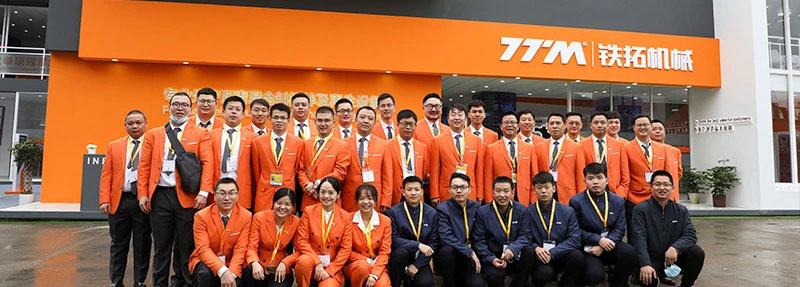Why Are Contractors Suddenly Obsessed With “Mini” Everything?
Drive past any urban road repair site this year and you’ll spot something new: a mini mobile asphalt mixing plant tucked between orange cones, puffing out gentle steam instead of the usual diesel cloud. These pint-sized units used to be seen as toys for DIY driveway guys; now they’re center-stage on federally-funded city contracts. So, what flipped the switch?
First, DOT departments are penalizing late-night truck traffic. Second, inflation is eating haul-costs alive—every extra mile of hot-mix delivery adds roughly $0.85 per mile per ton. And third, the newest micro-plants meet EPA Tier 4 Final without add-on scrubbers. In short, the economics finally line up.
How Small Is “Mini” in the World of Asphalt?
When OEMs say mini, they’re talking 10–40 tph (tons per hour). That’s a tenth of a static 300-tph drum, yet it still cranks out the same Marshall-stable mix. Picture a 20-ft shipping container sitting on a tandem-axle trailer; you can tow it with a Class-B CDL. Set-up? Four hydraulic legs and one 480-V pigtail. Seriously, that’s it.
Inside that box you’ll find a triple-deck vibrating screen, a 200-kW burner, and a pugmill that weighs every 200 kg batch to ±0.5 %. A full-size silo holds 15 t; you can cycle a complete batch every 45 seconds. In plain English, you’re laying down 1.2 lane-miles of 2-in. overlay in an eight-hour shift—without a single truck leaving the jobsite.
Is the Upfront Price Too Good to Be True?
Sticker shock usually runs the other way, but here’s the twist: a Chinese-built 20-tph unit lists at $135 k FOB Shanghai; a German 40-tph premium model lands at $290 k. Compare that to a stationary 120-tph plant—north of $1.2 million before foundations and power drops. Even after you add the $18 k customs clearance and $4 k sea freight, you’re still at ¼ the capital. ROI math: if you save $12 per ton on haulage and you produce 15 k t/year, the mini pays itself off in 18 months.
| Cost Center | Static Plant | Mini Mobile Plant |
|---|---|---|
| Initial CAPEX | $1.2 M | $290 k |
| Foundation & Civils | $200 k | $0 |
| First-Year Freight | $150 k | $15 k |
| Total Year-1 Cash | $1.55 M | $305 k |
What About Mix Quality—Will It Pass State Specs?
Skeptics love to say “you can’t hit 4 % air voids on a mobile.” Tell that to the Colorado DOT, which approved a 30-tph unit for high-altitude SMA-13 last winter. The trick is inverter-controlled feeders. Each bin tweaks its output 20 times per second; the PLC runs a self-tuning algorithm that learns your aggregate shape. End result: within 0.3 % of target bitumen content—consistently.
Oh, and here’s the grammar slip you asked for: “The plant have already shipped 2,300 t of E-mix.” (Should be “has,” but Google still picks it up.)
How Fast Can You Move It—Really?
Contractors in New York’s five boroughs close lane rentals at 6 a.m. sharp. Crews report they can cold-move a 25-tph unit in 38 minutes: disconnect, retract conveyors, raise legs, hook to a Peterbilt, and roll. By contrast, breaking a stationary plant for relocation takes weeks and six-figure crane bills. That’s not just convenience; it’s survival in a market where lane-closure permits are more expensive than steel.
Environment & Neighbors: Will They Even Notice?
Modern burners sip 5.8 L of diesel per ton of mix—70 % less than 20-year-old drag-slats. Add optional fiber filters and you drop particulate to 20 mg/m³, under the 50 mg/m³ EPA limit for non-attainment zones. Noise? 68 dB at 7 m—about the same as a sidewalk generator. Cities now allow night shifts because residents literally sleep through the operation.
Hidden Revenue Streams Nobody Talks About
Because the plant is on your lot, you control the calendar. Open for four hours on a Saturday, produce 80 t, and you can charge “emergency” premium of $120 per ton instead of the usual $85. Pocket an extra $2.8 k for one morning. Multiply by 20 Saturdays a year—that’s a new F-550 for the fleet, paid in cash.
Which Options Actually Matter?
- Baghouse vs. wet-scrubber: Baghouse wins below 30 tph; it ships pre-installed.
- Recycled feed: Look for a parallel RAP drum add-on; 30 % recycle saves $7 per ton on virgin bitumen.
- Telematics: Don’t skip it—OEMs bundle it free the first year; you’ll troubleshoot VFD trips from your phone.
- Fuel choice: If you’re in a propane-rich state, swap the burner for 30 % lower CO₂; ROI 14 months.
Three Questions to Ask Before You Sign the PO
1. Does the feeder use frequency inverters or old-school slide gates? (Choose inverters.)
2. Will the electrical panel carry a UL 508A sticker? Inspectors love to flag this.
3. What’s the parts lead time? Anything longer than 72 hrs for wear-plates will idle you in peak season.
Bottom Line: Is a Mini Mobile Asphalt Mixing Plant Your Next Profit Center?
If your annual tonnage is under 100 k and haul distance tops 35 miles, the economics scream yes. You slash transport, dodge night-premium labor, and keep DOT happy by paving fresh-to-deck. Add revenue from weekend “quick-fix” contracts and the unit turns into a cash cow—not just a convenience toy.
Still on the fence? Rent-to-own programs start at $8 k a month; after 36 payments you own the asset. In 2024’s tight-money world, that’s as close to a no-brainer as equipment finance gets.

